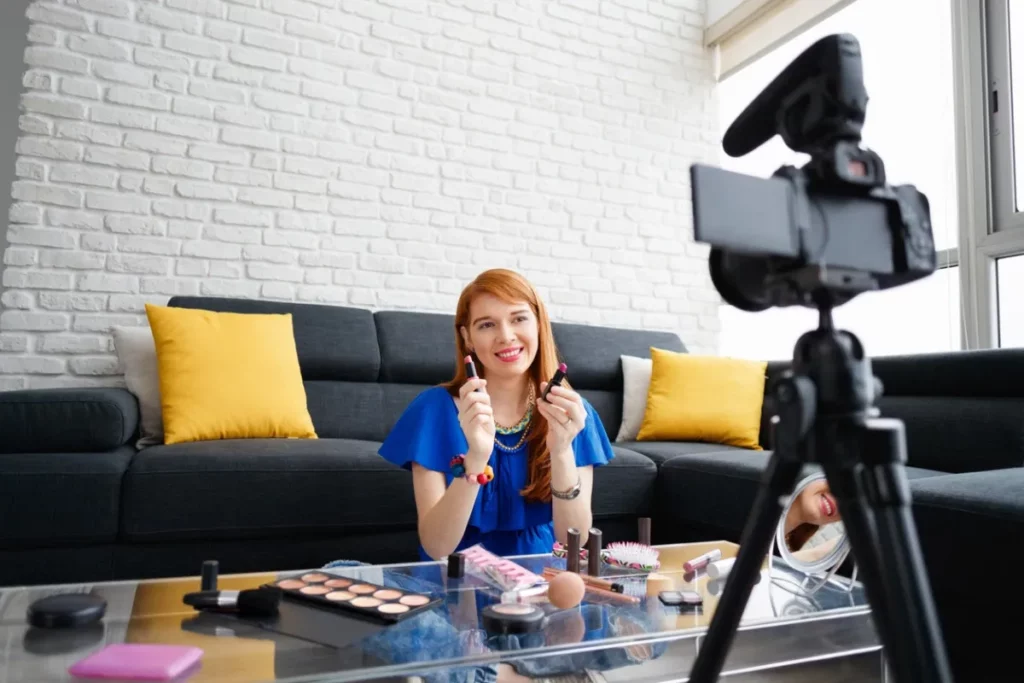With the landscape of shopping and consumption mainly online, many consumers are holding a critical lens to the companies they buy from. Not only do they want to know that the products or services are trustworthy, but also tangible examples and anecdotes from others. One way to showcase your brand’s work is with influencers who can give a personal perspective on your business.
Why influencers matter…
In a recent study, searches for the phrase “influencer marketing” rose to 61,000 on Google in 2018. And, as visual platforms like Instagram, YouTubers, and Tik Tok continue to boom, brands will need to shift their thinking away from traditional ideas of social media marketing to connect with their audiences. Popular individuals like Liza Koshy (Youtuber), singer Ciara, and Jenni Farley (Jwow from Jersey Shore) have been seen incorporating and showcasing products in their daily lives on Instagram for their followers.

And the numbers don’t lie. When Silk tapped into fitness influencers for their “Meatless Monday initiative, Households exposed to influencer marketing purchased 10% more Silk products compared to their control group. And this through organic non-paid media. By working with influencers, you are giving a voice and face to your brand with tangible numbers. This way you can report back on the engagement and ROI.
Identifying your key players….
It is important to address who you want your spokesperson or people to be. While we would all love a major celebrity to represent our brand, that is not always possible. However, some of the best influencer marketing can come from less popular accounts but have more authentic audiences. (I.E. Mommy blogs for cleaning products or children’s toys, makeup gurus for a new cosmetic line). One way to identify who these individuals are is to do a deep dive of any hashtags used related to your product, company, and your competing businesses. See who is talking about you, your partners/competition, and in what context.
Don’t have a hashtag? Create one! Ask people to post about how your product or service has helped them with a dedicated hashtag to use. The best part about this is you can use it as a personal search engine for influencers. You can use the content as storytelling pieces to share on your social networks for further engagement. (double bonus!)
Keeping it #businessfirst…
Once you identify the few influencers you want to contact, treat it like any other business deal. It can be easy to fall into an informal setting while direct messaging these individuals. Keep in mind that this also a form of work for some of these account holders, and they are held to Federal Trade Commission guidelines to disclose what they advertise. Make sure that you are giving your influencers agreements with messaging, guidelines, and deadlines. Don’t be afraid to audit their profiles, address any potential issues, and ask questions. It’s important to have that transparency with them from the beginning. As you also want them to have transparency with your audience as an ambassador.
Yes, influencer marketing is not necessarily a new form of advertising, but the landscape has developed drastically over the last few years. Especially with the increase of new mediums for consumption. It has gone from the wild west to a regulated form of advertising that almost anyone can tap into. Understandably, companies may be hesitant to use influencers (controversial opinions, photos, past comments) as it can hurt the business reputation later down the line. However, with the right research and agreement in place, it can be a successful calculated risk. It will allow your brand to have a relatable voice and face to shine above the noise and tap into unexpected audiences.
Learn how you can implement influencer partnerships into your marketing strategy at Marketing On Tap: The Power of Influencer Marketing on February 20 in Springfield, New Jersey. Save the date!
Author: Anna Chamberlain


